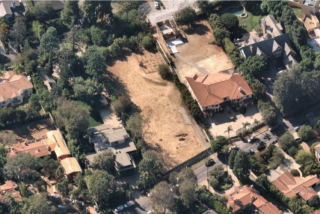Fullerton Group Will Oppose Development of Coyote Hills
In Fullerton’s Coyote Hills, elderberry bushes and orange monkey flowers mix among fields of beavertail cactus, providing cover for small wildlife. The howl of coyotes tells neighbors in the nice homes nearby that there’s still a chunk of natural habitat around.
Not forever, it seems.
Some year down the road, a major part of Coyote Hills’ 600 raw acres in Fullerton will be transformed into streets, sidewalks and new homes with small lawns.
That’s Connie Spenger’s nightmare.
“Coyote Hills is a treasure, and we should preserve it,” she said.
Spenger, a longtime resident, and others have formed a group called Friends of Coyote Hills, hoping to take the lead in preserving some of north Orange County’s dwindling open space. They want to keep Coyote Hills just the way it is--except with the fences torn down, so people can enjoy it more.
City officials counter that they have worked hard to ensure that at least half the undeveloped land will stay that way. But Spenger’s group says it’s not enough, that all the remaining land is needed to support a coastal sage scrub ecosystem.
“I think they’re fighting a lost cause,” said Fullerton Mayor F. Richard Jones. “I’m for people, not coyotes. I know that’s blunt, but it’s the way it is.”
Coyote Hills, just north of Rosecrans Avenue between Euclid Avenue and Beach Boulevard, is owned primarily by the Chevron Oil Co. Officially known as West Coyote Hills, it once was a thriving oil field, dating back to 1890. But the wells have been capped for years. All that’s left is an old maintenance road and a radio tower.
An additional 86-acre portion on the west side is owned by the heirs to the old Emery Ranch. That section, in an unincorporated southwest corner of the hills near Beach (which the city will annex), has already been approved for a new development of 203 single-family homes called Hawks Pointe.
The city has been working with Chevron for more than 10 years on plans for the rest of the undeveloped area for a large tract of single-family homes. And Chevron has already donated more than 75 acres to the city as West Coyote Hills Park.
“We believe that some 400 acres of that 600 left will remain as open space,” said Paul Dudley, the city’s director of developmental services. “We absolutely favor open space.”
The new preservation group is not convinced. And even if Dudley is right, its members say it still won’t be enough.
Fullerton, which has preserved 27 miles of trails throughout the city, does have an agreement with Chevron that provides trails along the Coyote Hills border. It’s used daily by people on foot, horseback or mountain bikes who enjoy the serenity of the undeveloped land. But a fence keeps the public from going any further. A sign warns that trespassers face a fine because the area is a natural habitat for an endangered bird, the gnatcatcher.
“Can you imagine these people saying they want to help the gnatcatcher?” said Matt Reynoso, an artist who’s part of Friends of Coyote Hills. “What good do you do the gnatcatcher if you turn everything into concrete?”
Again, city officials say the new group is off base. Mandates by the U.S. Fish and Wildlife Service will ensure that there’s enough open space left for gnatcatchers, Dudley said.
The idea for the new group, Spenger said, came from watching activists in neighboring La Mirada in Los Angeles County fight to save a small portion of the hills that spill into their city.
The La Mirada group lost, however. A housing tract was approved there within the past year.
“But we plan to be better organized,” said Spenger.
Chuck Buck, chairman of Orange County’s Sierra Club chapter and a member of the Coyote Hills group, says Chevron owes it to the city to preserve the hills.
“They’ve made their buck out of the place already,” he said, referring to the oil fields.
The group hopes for a boost from the Fullerton Riders Club, which has been negotiating to have Chevron let it build a stable there. Bevann Moisi, a leader in the equestrian club, says the two groups have the same goal.
“I’ve been riding these hills since I was a little girl,” she said. “But there are few hills left to ride.”
This isn’t the first group, of course, to fight to save the hills.
In the 1970s, local activists struggled to keep housing from springing up in other areas of Coyote Hills. Their efforts were largely unsuccessful, although they did keep the development from spreading into the area now debated.
But Jones says that this time around, much of the remaining area will eventually be turned into houses--and he’s all for it. He points to the new Hawks Pointe project, with half its acreage reserved as open space, as an example of something the city will be proud of.
“What this city needs is a sound economic base,” he said. “And that means more tax dollars. If Chevron comes up with a proposal as attractive at Hawks Pointe, you bet I’m going to support it.”
(BEGIN TEXT OF INFOBOX / INFOGRAPHIC)
Shrinking Open Space
Fullerton residents have formed Friends of Coyote Hills to keep the entire 600 acres as open space.
More to Read
Sign up for Essential California
The most important California stories and recommendations in your inbox every morning.
You may occasionally receive promotional content from the Los Angeles Times.









